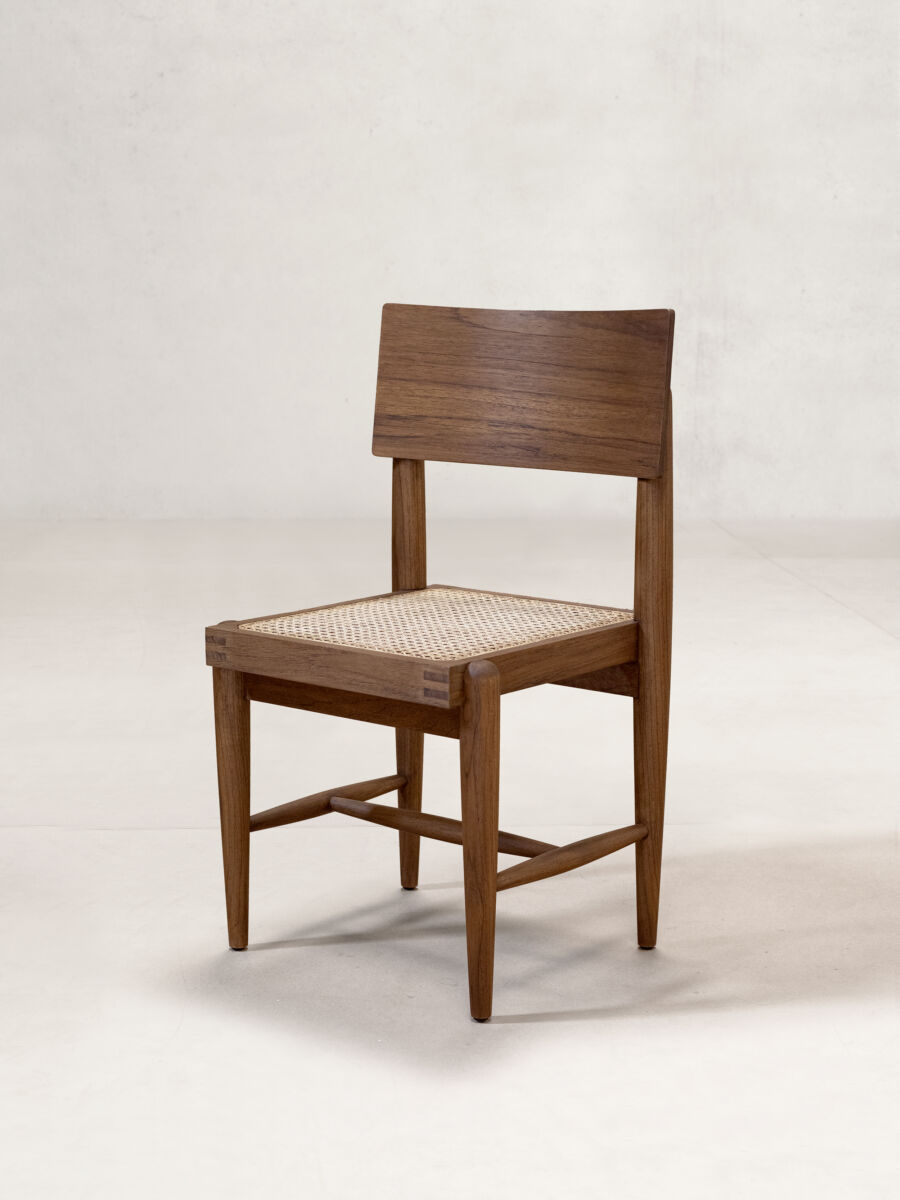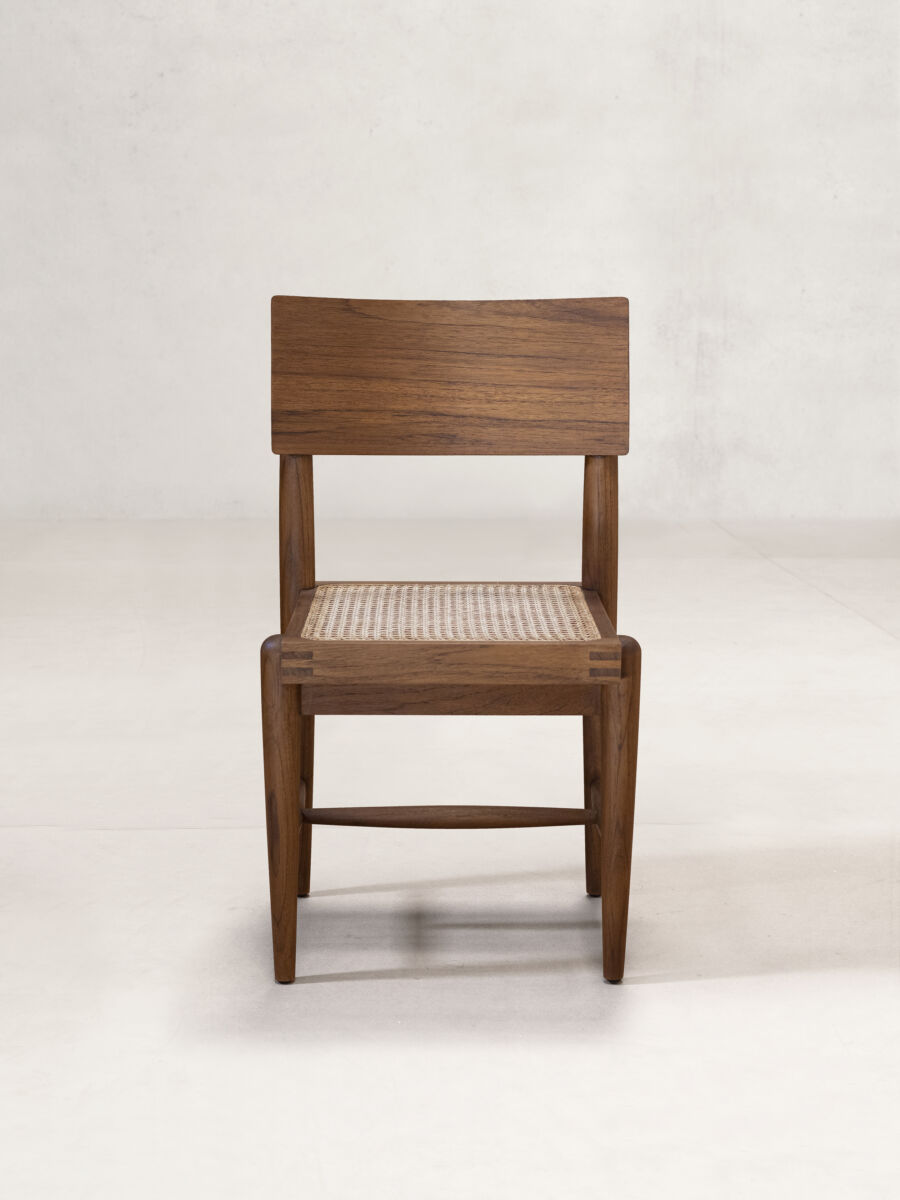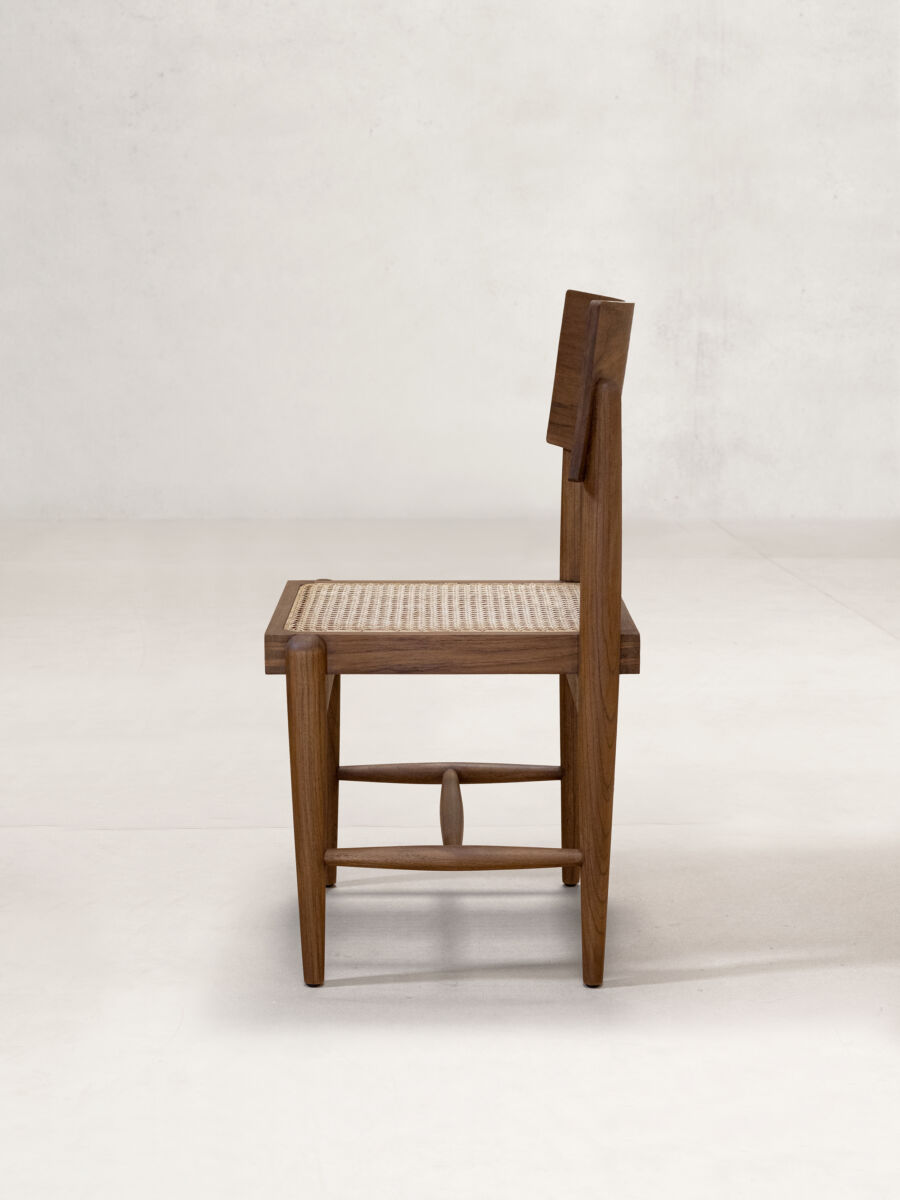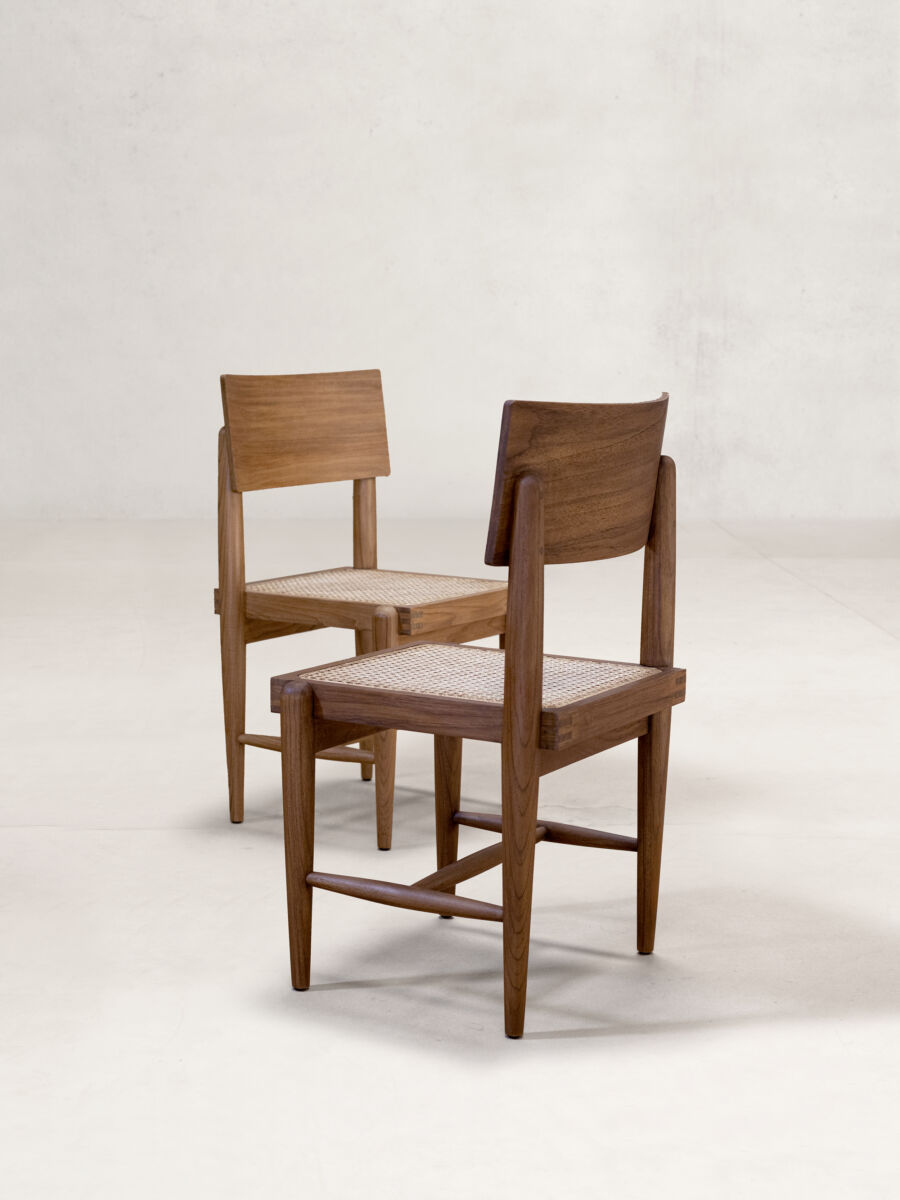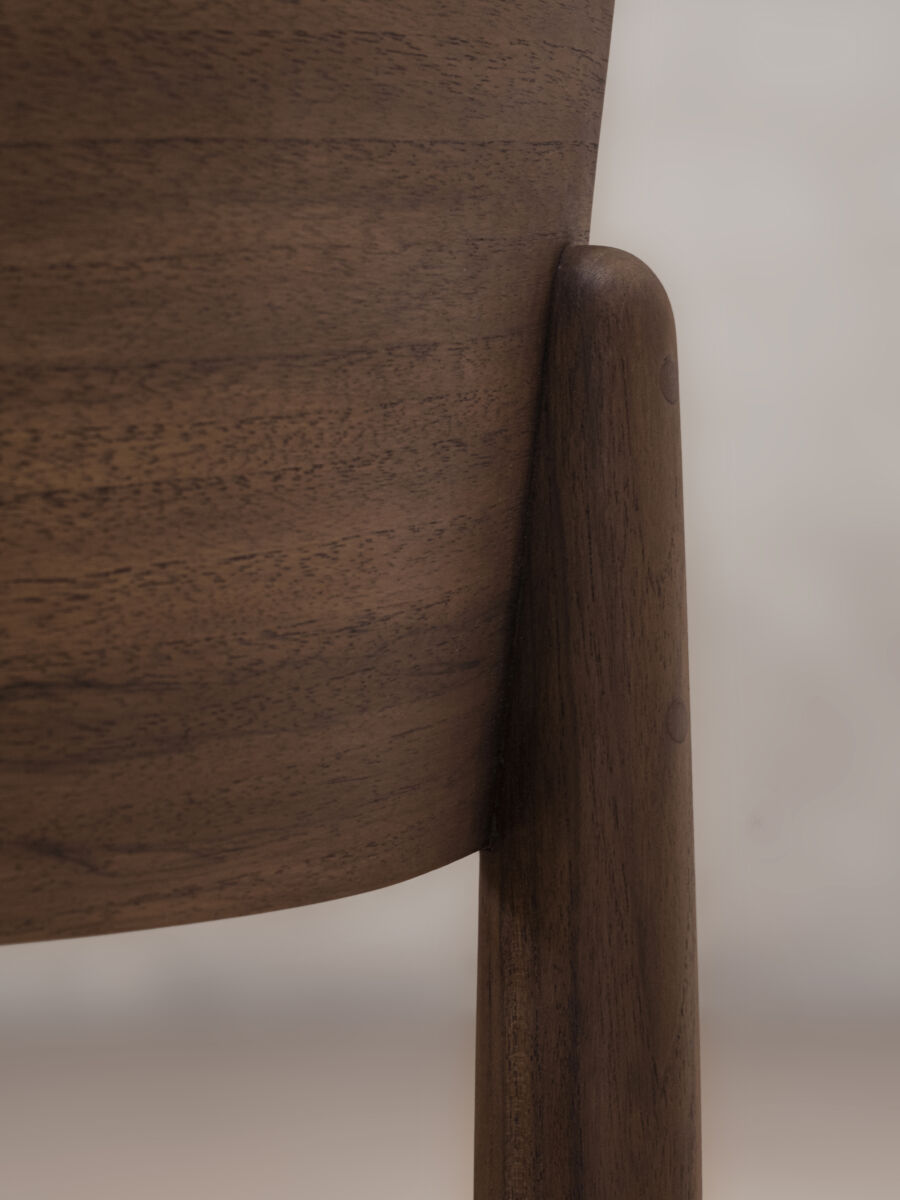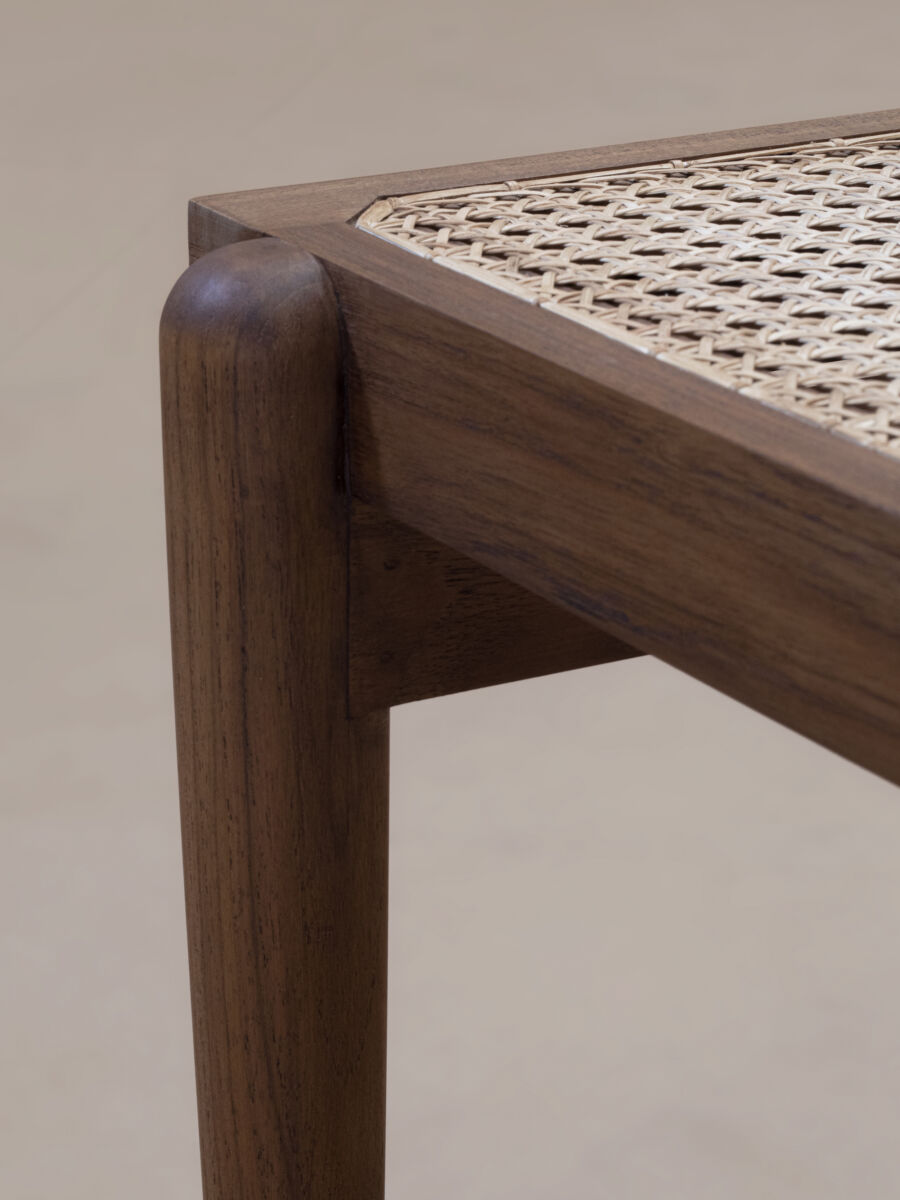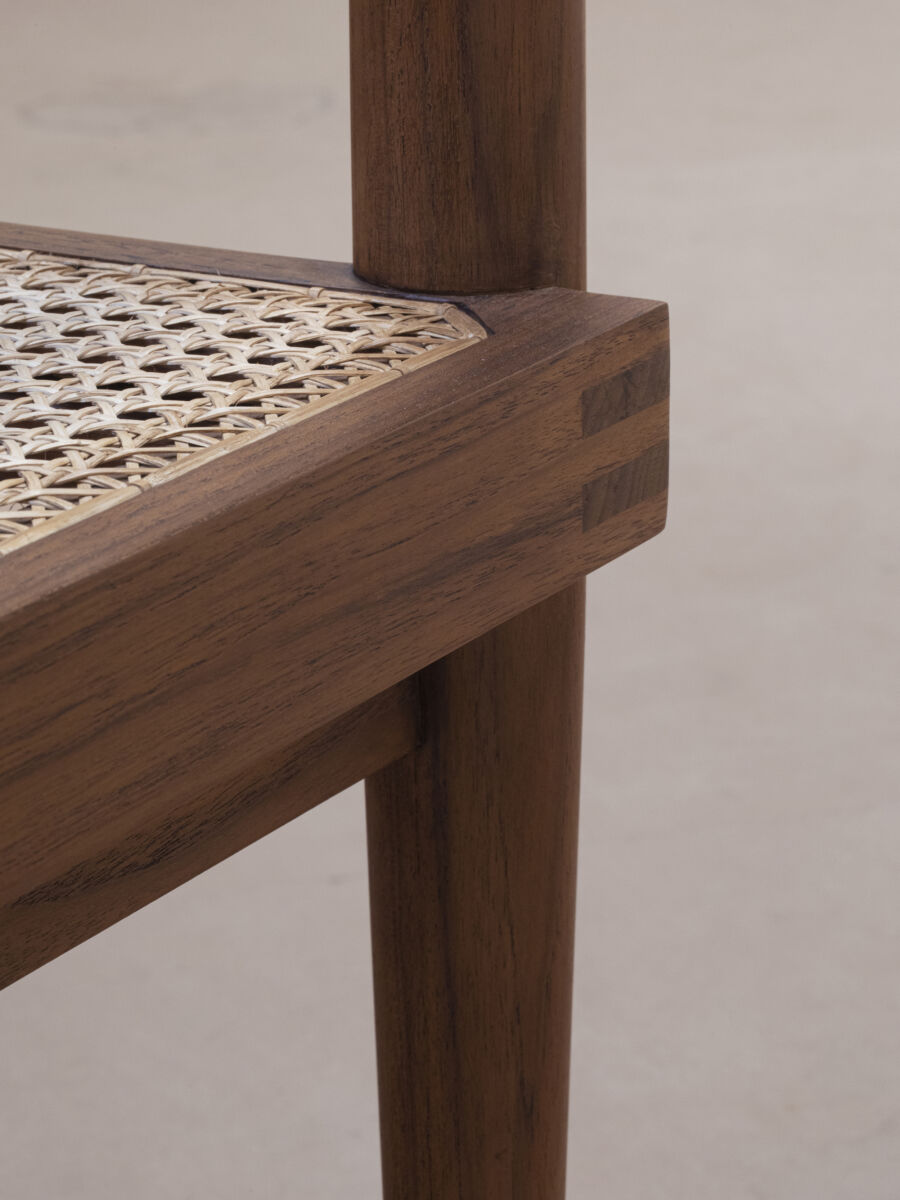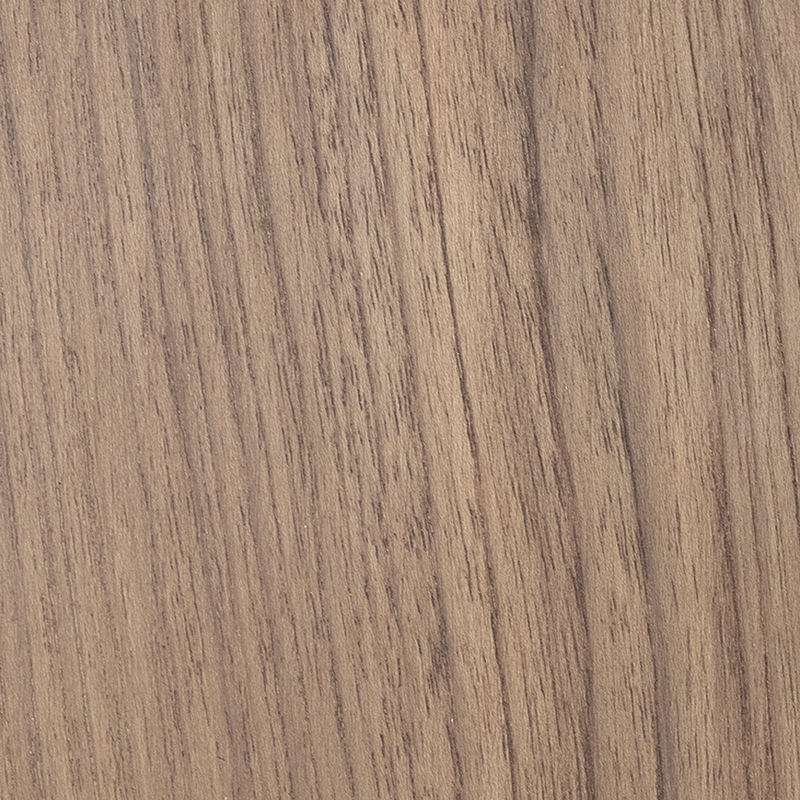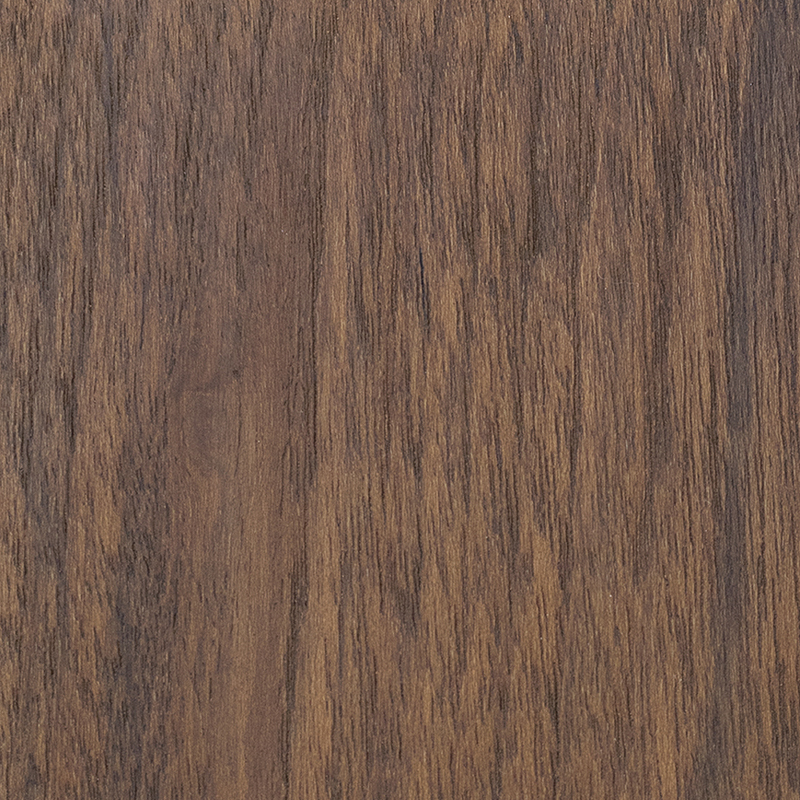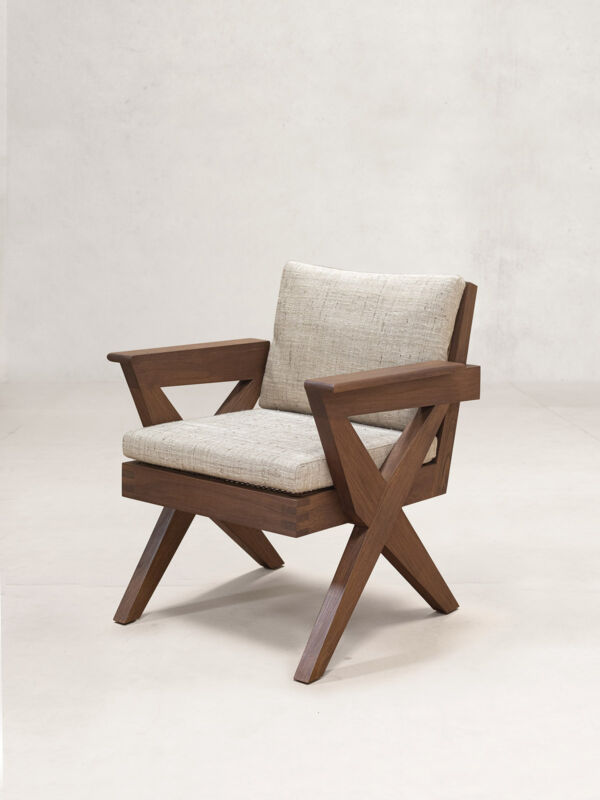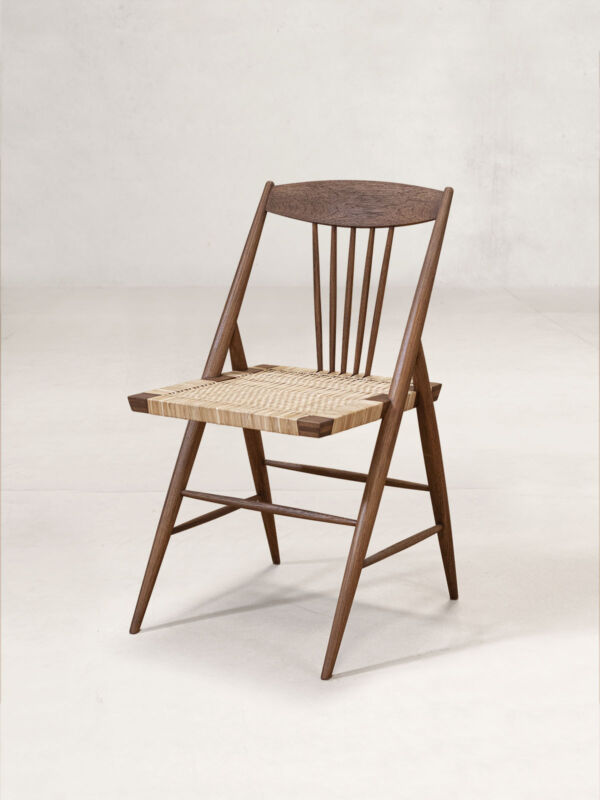Aditya Prakash Dining Chair |
||||||||
|
||||||||
| How to buy | ||||||||
| Enquire |
Product Description
Much of architect Aditya Prakash’s furniture reflects the French modernist elements of Chandigarh. However, his interests included various other schools of modernism and furniture styles. This dining chair, with its bent wood backrest and rounded tapering legs, for instance, neatly captures his fascination with Nordic design. Its robust construction, clean lines and woven cane seating lends the chair the charm of a classic. It can be used in various settings as a Dining Chair or a Desk Chair.
Product Specification
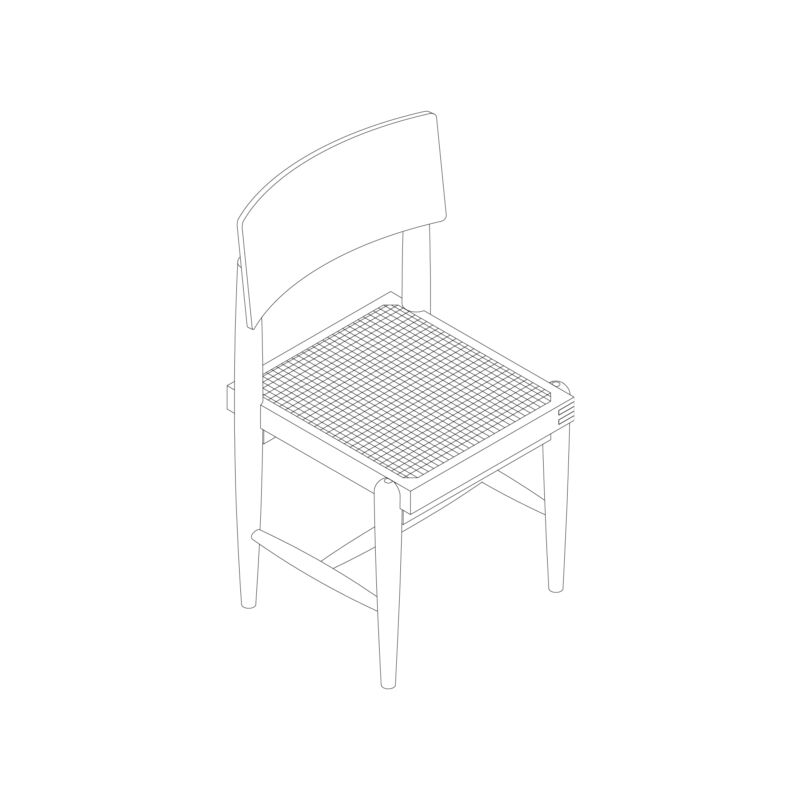

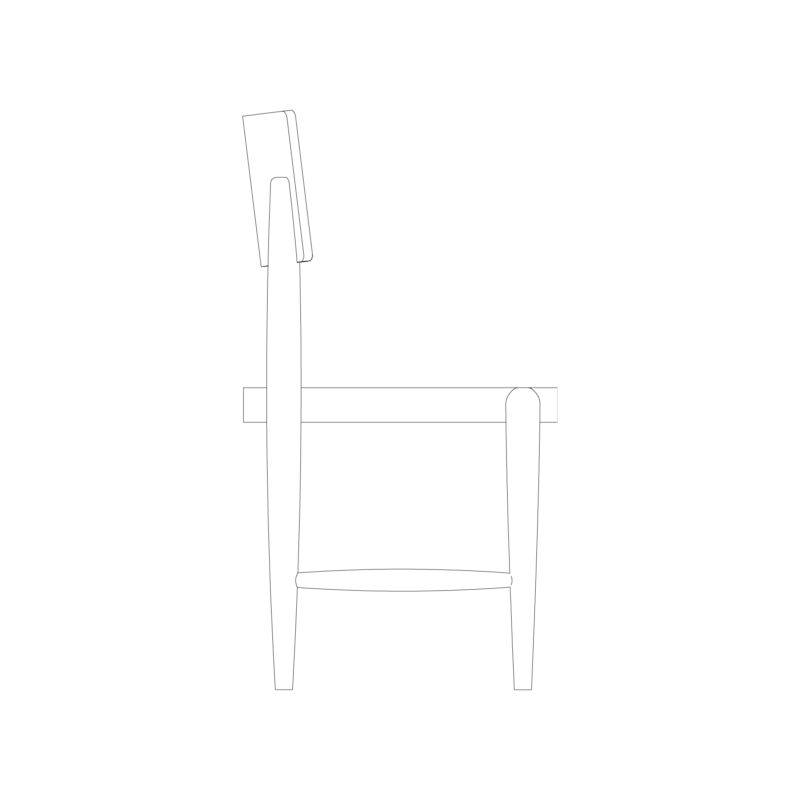
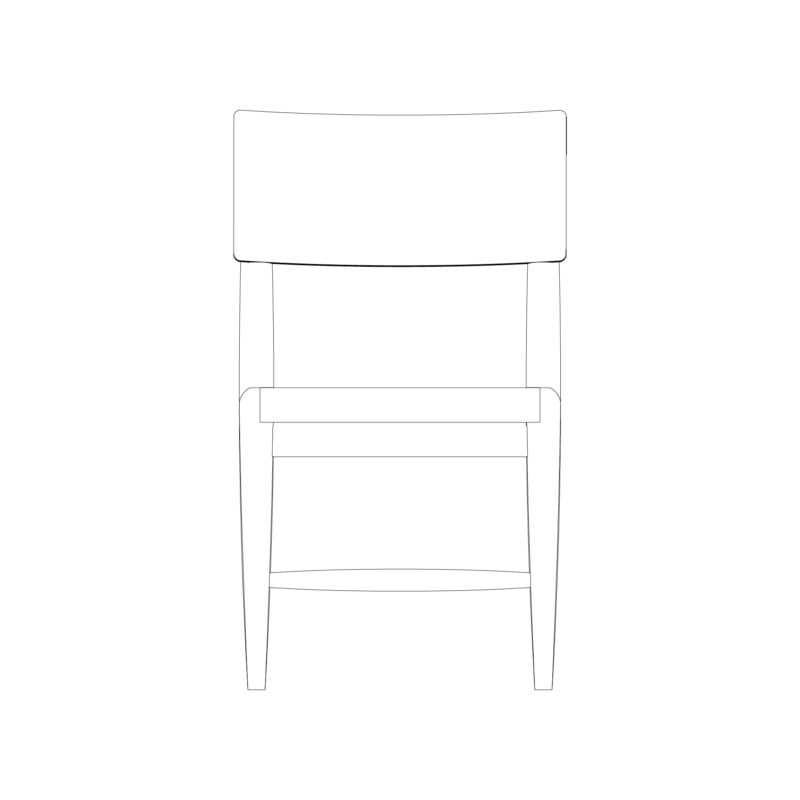
Product Options
We offer this product in a choice of two wood finishes: Natural Teak and Dark Stain.
For the Natural Teak finish, the wood is sanded and finished with hard wax oil to bring out the natural, golden-brown colour of the teak.
For the Dark Stain finish, a coat of water-based, teak stain is applied to give the wood a darker teak shade, followed by a coat of a sealer.
Related Products
See More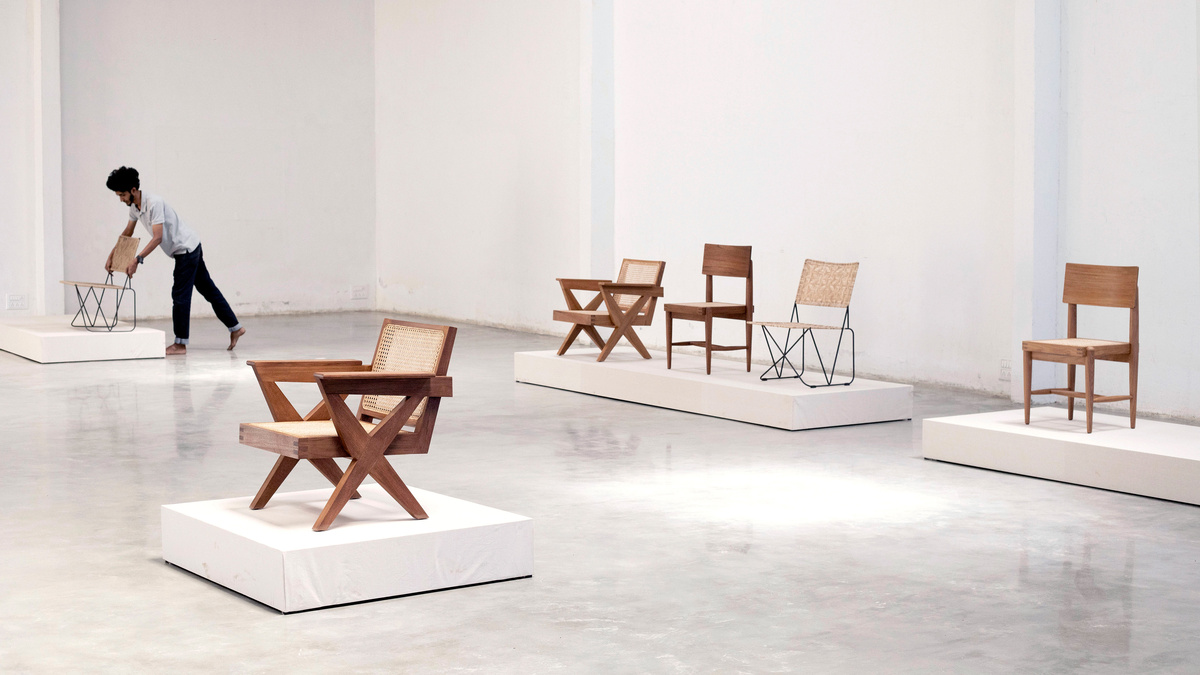
The Aditya Prakash Collection: Seats for Conversation
Born in 1924 in the north Indian city of Muzaffarnagar and trained in London as an architect, Aditya Prakash was a junior architect at the Chandigarh Capital office under Le Corbusier and Pierre Jeanneret. His later work reflected the modernist ideals imbibed in these early years of training and, along with the likes of Achyut Kanvinde and B.V. Doshi, Praksh is often described as one of India’s first modernist architects. Despite his repute, however, much remains unknown about his oeuvre, which includes his experiments with furniture making – showcased in the Aditya Prakash Collection by Phantom Hands.
Read More